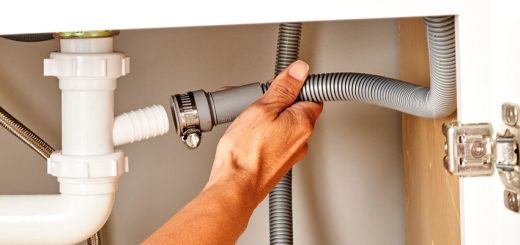Portable Dishwasher Leaking From Faucet? A Troubleshooting Guide
Portable dishwashers are fantastic for small living spaces and apartments where a full-sized dishwasher isn’t an option. However, a leaking faucet connection can turn the convenience of a portable dishwasher into a messy headache. If you’re facing this frustrating problem, don’t worry – fixing a leak is usually straightforward.
This guide will cover common causes of portable dishwasher leaks originating from the faucet, provide step-by-step troubleshooting instructions, and explain when to call a professional for help.
Understanding Your Portable Dishwasher’s Faucet Connection
Portable dishwashers use a unique adapter, often called a “quick-connect adapter” or “unicouple,” to attach the dishwasher’s hose to your kitchen faucet. This adapter usually has a lever or a twisting mechanism to secure it to the faucet after the original aerator is removed. Here’s where things can go wrong:

Common Causes of Leaks
- Worn-Out Gaskets/O-Rings: Inside the adapter are rubber gaskets or O-rings that form a watertight seal. Over time, these can degrade, crack, or lose their elasticity, leading to leaks.
- Loose Connection: If the adapter isn’t tightened sufficiently onto the faucet, or if it becomes loose during use, leaks will occur, especially as water pressure increases.
- Damaged Adapter: Cracks or breaks in the plastic adapter itself can cause water to spray outwards.
- Cross-Threading: Incorrectly attaching the adapter to the faucet can damage the threads on either the faucet or the adapter, compromising the seal.
- Faulty Faucet: In rare cases, the issue may be a worn-out or damaged faucet where the adapter connects.
Troubleshooting and Fixing the Leak
Step 1: Isolate the Leak’s Source
- Remove the adapter from the faucet. Examine the adapter coupling, gaskets, and O-rings closely for wear or cracks.
- Inspect the faucet threads where the adapter attaches for damage.
Step 2: Replace Worn Gaskets/O-Rings
- If the O-rings or gaskets appear worn, take them to your local hardware store and find replacements of the same size and thickness.
- Carefully replace the old O-rings/gaskets with new ones.
Step 3: Reattach the Adapter
- Make sure the faucet threads are clean.
- Apply a small amount of plumber’s tape (also known as Teflon tape) in a clockwise direction to the faucet threads for an extra layer of protection against leaks.
- Securely attach the adapter to the faucet, ensuring it’s tight but not overtightened.
Step 4: Test for Leaks
- Turn on the water and let it run for a few minutes. Observe the connection closely. If the leak is fixed, you’re good to go!
- If leaking persists, consider replacing the entire adapter. These are often inexpensive and readily available at hardware stores or online.
Additional Tips
- Use the Right Adapter: Verify you have the correct adapter for your faucet type and portable dishwasher model.
- Regular Inspection: Periodically check the adapter connection for tightness or signs of wear to proactively avoid bigger leaks.
- Don’t Overtighten: Overtightening the adapter can damage the plastic or the faucet threads.
- Read the Manual: Always consult your portable dishwasher’s manual for specific instructions or troubleshooting tips.
When To Call a Professional
If you’ve tried all these steps and the leak persists, or if you have any of these problems, it’s time to call a plumber:
- Damaged or unusually shaped faucet that prevents proper adapter attachment.
- A leak that’s not coming from the adapter connection.
- You’re uncomfortable with DIY solutions.
Conclusion
Leaking portable dishwashers are usually a simple fix. By understanding the connections, troubleshooting carefully, and replacing worn parts, you can eliminate this problem and get back to the convenience of your portable dishwasher. Remember, if you’re ever unsure, consulting a professional is always best to avoid causing further damage.
















